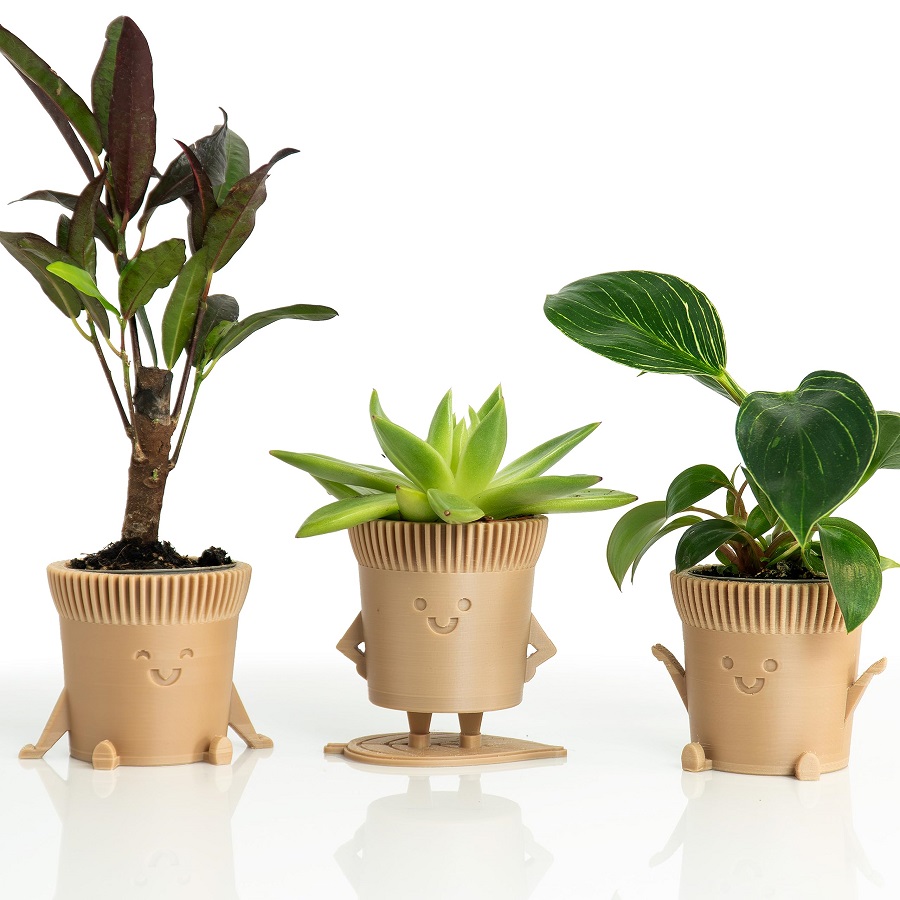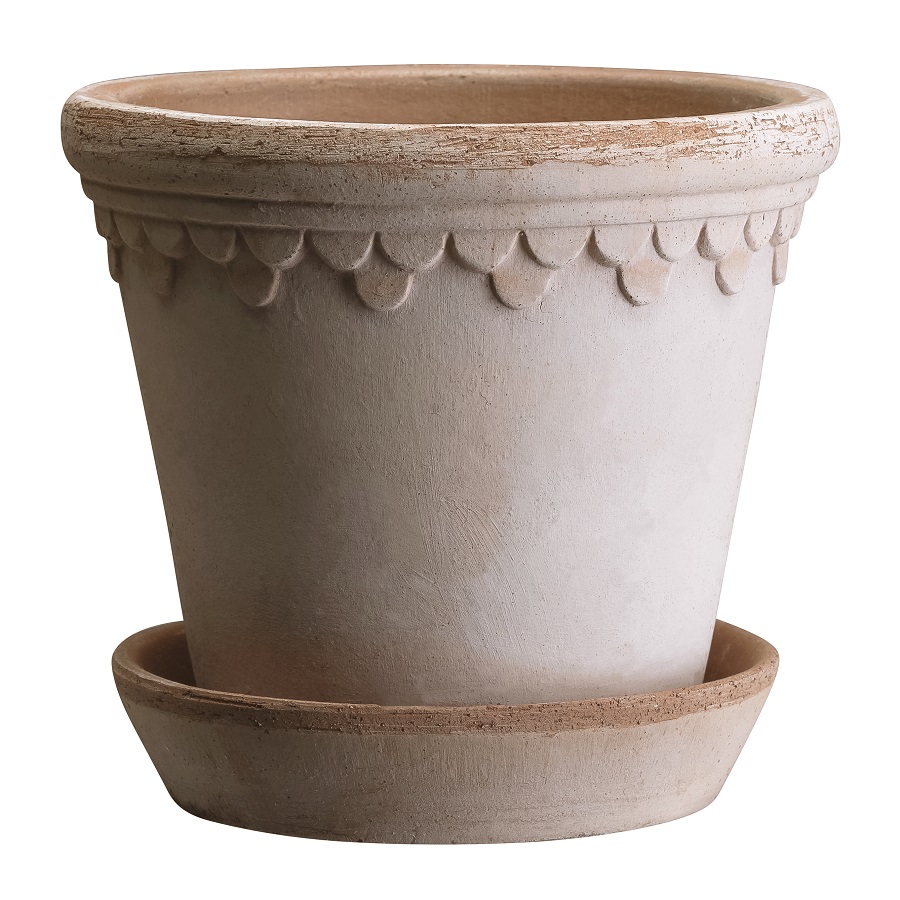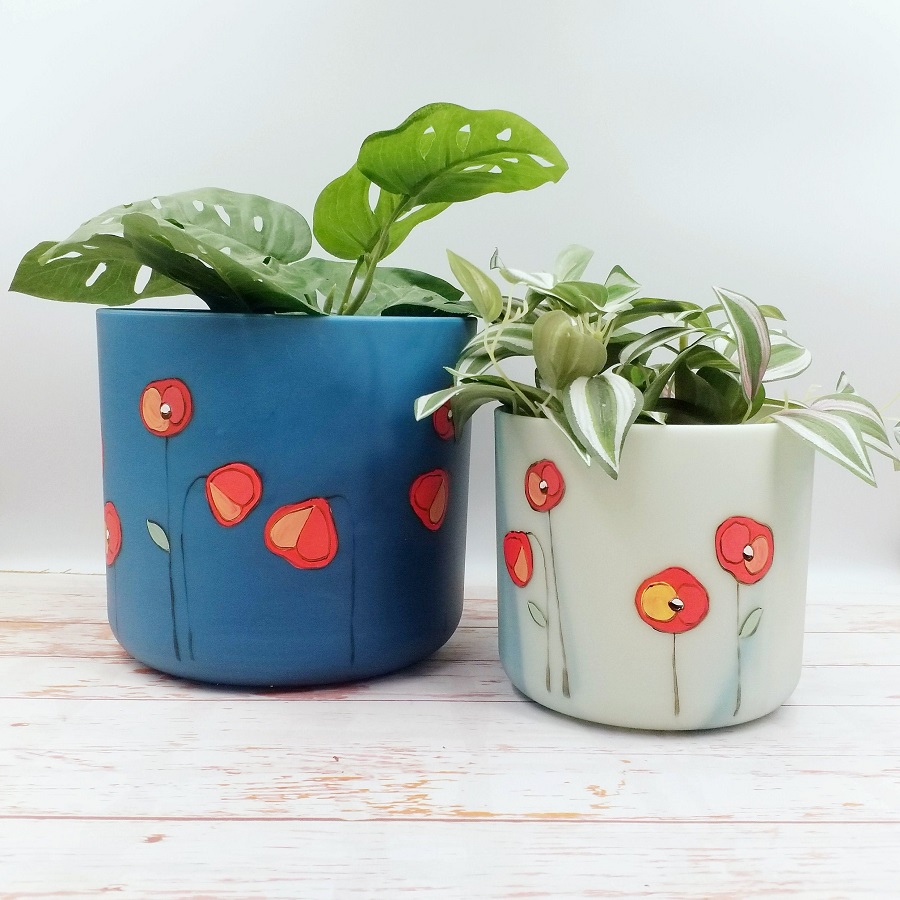Types of Flower Pot Materials
Choosing the right flower pot material can make a big difference in plant health and maintenance. There are several common materials used to craft flower pots, each with unique characteristics. I’ll cover some popular types here.
Clay and Terracotta
Clay and terracotta pots are classic options. They permit air to flow but may need more watering due to their porous nature. They can crack in cold weather, so look for frost-proof varieties if you live in a freezing climate.
Plastic
Plastic pots are light, affordable, and come in many styles. They retain moisture well but may deteriorate in the sun over time. Darker plastic can absorb more heat, which could stress the plant roots in intense conditions.
Glazed Ceramic
Glazed ceramic pots showcase vibrant glazes and a wide range of styles. They’re less prone to freezing damage but are heavy and typically cost more. Take care when moving them, as they can chip or break if dropped.
Fiberglass
Fiberglass pots are tough, lightweight, and usually more expensive. Plants thrive in them, although they don’t offer great insulation from temperature changes. They can be brittle, so handle with care.
Concrete
Concrete pots are highly durable and offer stability for larger plants. While affordable, they are heavy and often seen as permanent fixtures due to their weight. They work well for plant growth.
Foam
Foam pots are lightweight and excellent insulators against heat and cold. They are generally more affordable and available in many designs, though they might not be as durable as other materials.
Metal
Metal pots can provide a unique look but conduct heat and cold, which may affect root temperatures. If you choose metal, consider pots with thicker walls or use a liner to insulate the plant roots.

Benefits and Drawbacks of Different Materials
Every flower pot material has its pros and cons, impacting how well they serve your gardening needs.
Moisture Retention and Drainage
Clay pots, like terracotta, are porous, allowing air and moisture to pass through. This means water evaporates faster, requiring more frequent watering. Plastic and self-watering pots retain moisture better and decrease the need for frequent watering. Glazed ceramic pots prevent moisture from escaping, which is helpful in keeping soil from drying out too quickly.
Weight and Stability
Metal and concrete pots are heavier, offering stability for top-heavy plants. This makes them hard to move but great for larger plants that need strong support. Plastic and foam pots are light, making them easy to move around but less stable.
Durability and Weather Resistance
Concrete and metal pots are highly durable and withstand various weather conditions. Clay and terracotta may crack in cold weather unless they are frost-proof. Plastic might degrade under direct sunlight, losing color and strength over time.
Insulation Properties
Foam pots are excellent at insulating plant roots from temperature fluctuations. Metal pots, however, can transfer external temperature changes directly to the roots, which can be harmful. Clay pots provide moderate insulation, but changes in external temperatures affect them more quickly than more insulated materials.
Choosing Pots Based on Plant Needs
Selecting the right pot is crucial for plant health and growth. Consider the specific needs of the plant and the environment it will grow in.
Plant Specific Requirements
Different plants have unique needs in terms of moisture, temperature, and air flow. For example, cacti and succulents thrive in terracotta pots which allow soil to dry out quickly. In contrast, tropical plants often benefit from plastic or glazed ceramic pots that retain moisture better. Always choose pots with drainage holes to prevent waterlogging which can lead to root rot.
Size and Growth Considerations
The size of the pot should accommodate the plant’s root system. A pot too small can restrict growth and stress the plant. On the other hand, a pot too large for a small plant can hold excess moisture leading to root diseases. As a general rule, opt for a pot that is one size larger than the plant’s current container. This gives sufficient room for roots to grow without leaving too much empty space which can negatively impact moisture balance.

Aesthetic Considerations for Flower Pots
Choosing a flower pot is not just about functionality. Aesthetic appeal plays a significant role as well, especially if pots are part of your home decor. Here are some factors to consider when choosing style and color, and how these pots can complement your home decor.
Style and Color
Select pots based on the style and color that match your personal taste and the decor of your space. Clay and terracotta pots lend a traditional and rustic appearance, suitable for a classical setting. Glazed ceramic pots come in vibrant colors and diverse finishes, providing a striking visual contrast. For a sleek, modern look, consider fiberglass or metal pots which offer clean lines and contemporary finishes. The color of the pot can also affect the visual warmth of the space. Lighter colors can brighten a room while darker colors tend to offer a more grounded, subtle vibe.
Complementing Home D閏or
Flower pots can enhance or disrupt the aesthetic harmony of your living space. To create a complementary match, consider the color palette of your room. Neutral-colored pots in beige, gray, or cream can blend smoothly with any decor. Vibrant-colored pots can be used as accent pieces to add a splash of color to monochromatic themes. The texture of the pot can also add a dimension to your space — smooth, glossy finishes can add a touch of elegance, whereas rough, matte finishes can make the space feel more natural and earthy. Strategically placing flower pots in areas where they complement the furniture and fixtures can elevate the overall decor of your home.
Advanced Options in Flower Pots
In addition to basic materials, there have been innovations in pot design.
Self-watering Pots
Self-watering pots are a modern gardening solution. They have a built-in reservoir to store water. This helps to keep soil moist for longer periods. Plants can draw water as needed, reducing the need for frequent watering. These pots are ideal for busy plant owners. Plus, they come in various styles and sizes to fit different plants and decors.
Decorative and Historical Pots
Decorative pots add beauty to plants, coming in unique designs and historical styles. Many are inspired by ancient cultures and can serve as art pieces. They often lack the functionality of modern pots but are perfect for showcasing plants in style. Historical pots reflect different periods, showing the evolution of pot crafting. These pots can be made of terracotta, ceramic, or even metal, enhancing your home’s decor with their distinct looks.

Practical Tips for Choosing Flower Pots
When seeking the perfect flower pots, consider your budget and the quality you aim for.
Budget Considerations
It’s essential to balance cost with quality. Cheaper pots may not last long and can crack or fade. More expensive options, like polypropylene plastic pots, are often more durable. Use recycled containers for a cost-effective and eco-friendly choice.
Checking Quality and Suitability
Ensure pots have drainage holes to prevent waterlogged soil. Pots should suit plant needs for moisture, temperature, and size. For cold climates, select frost-proof varieties to avoid cracks. Remember to touch and feel the pot’s texture to gauge its sturdiness and finishing quality.
